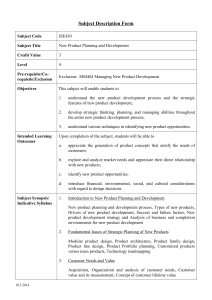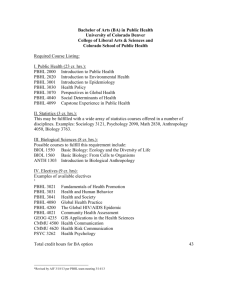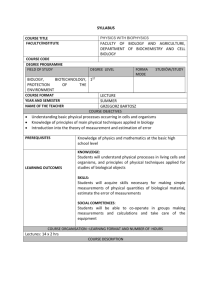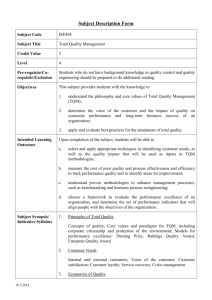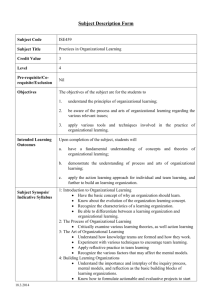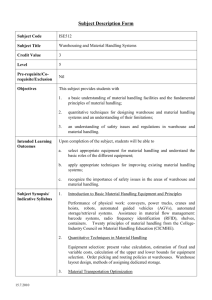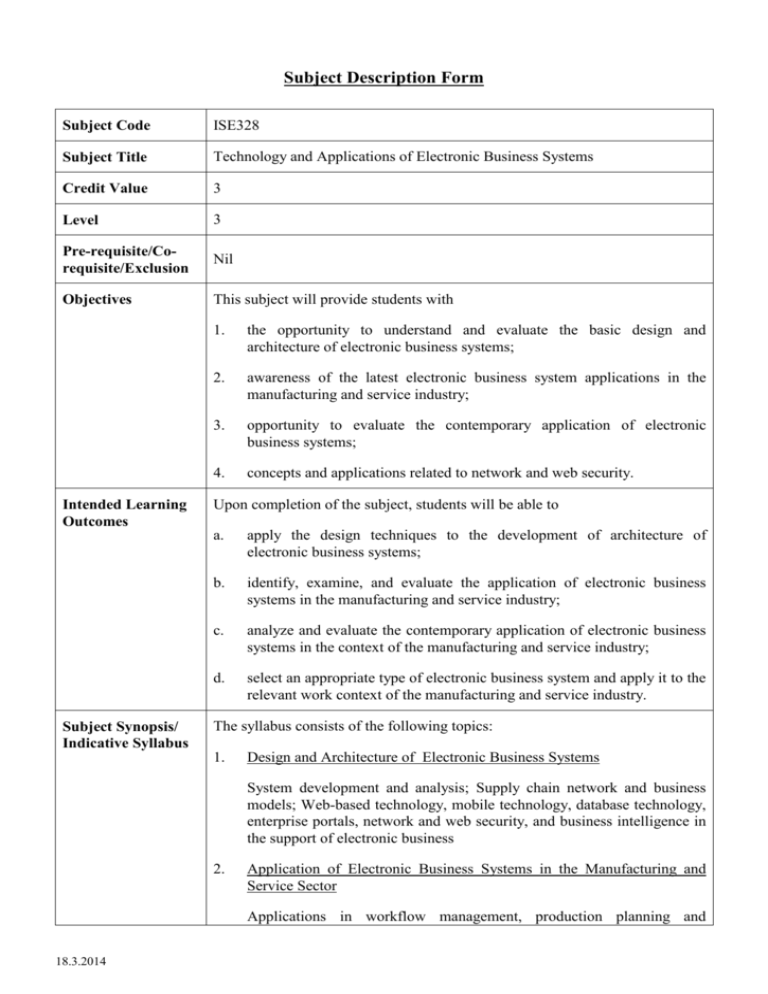
Subject Description Form
Subject Code
ISE328
Subject Title
Technology and Applications of Electronic Business Systems
Credit Value
3
Level
3
Pre-requisite/Corequisite/Exclusion
Nil
Objectives
This subject will provide students with
Intended Learning
Outcomes
Subject Synopsis/
Indicative Syllabus
1.
the opportunity to understand and evaluate the basic design and
architecture of electronic business systems;
2.
awareness of the latest electronic business system applications in the
manufacturing and service industry;
3.
opportunity to evaluate the contemporary application of electronic
business systems;
4.
concepts and applications related to network and web security.
Upon completion of the subject, students will be able to
a.
apply the design techniques to the development of architecture of
electronic business systems;
b.
identify, examine, and evaluate the application of electronic business
systems in the manufacturing and service industry;
c.
analyze and evaluate the contemporary application of electronic business
systems in the context of the manufacturing and service industry;
d.
select an appropriate type of electronic business system and apply it to the
relevant work context of the manufacturing and service industry.
The syllabus consists of the following topics:
1.
Design and Architecture of Electronic Business Systems
System development and analysis; Supply chain network and business
models; Web-based technology, mobile technology, database technology,
enterprise portals, network and web security, and business intelligence in
the support of electronic business
2.
Application of Electronic Business Systems in the Manufacturing and
Service Sector
Applications in workflow management, production planning and
18.3.2014
inventory control, electronic procurement and trading, and others
Teaching/Learning
Methodology
A combination of lectures, case studies, and projects with the support of
laboratory work is used to deliver the various topics in this subject. Students
carry out the practical work in the Microsoft Enterprise Systems Center. Some
topics are covered in a case-based format to enhance learning experience,
whereas others are covered through directed study to cultivate self-learning.
Case studies are used to demonstrate how the various techniques are
interrelated and how they are deployed in an actual environment.
Assessment Methods
in Alignment with
Intended Learning
Outcomes
Specific assessment
methods/tasks
%
weighting
Intended subject learning outcomes to
be assessed
a
b
c
1. Assignments
15%
2. Quiz
15%
3. Test
30%
4. Projects
30%
5. Presentations
10%
Total
100%
d
Assignments and quizzes are designed to assess students’ knowledge in
identifying and testing the contemporary application of electronic business
systems in real situations.
Projects are designed using some case studies to assess students’ understanding
of different concepts, including how to identify, select, and apply e-business
technology, and to develop and evaluate an e-business system.
Presentation is designed to assess students’ ability to present and explain the
developed e-business systems from their group.
Examinations are designed to test students’ understanding of the topics and
whether they can present the concepts clearly.
Student Study
Effort Expected
Class contact
Lectures
3 hours/week for 6 weeks
18 Hrs.
Laboratories
3 hours/week for 7 weeks
21 Hrs.
Other student study efforts
18.3.2014
Working on assignments
15 Hrs.
Preparation for presentation and report
40 Hrs.
writing
Preparation for quiz and test
Total student study effort
Reading List and
References
18.3.2014
30 Hrs.
124 Hrs.
1.
Lawrence, E, Corbitt, B, Tidwell, A, Fisher, J, & Lawrence, J R 2003,
Internet Commerce: Digital Models for Business, Milton, Qld: Wiley
2.
Davidow, W H & Malone, M S 1992, The Virtual Corporation, New
York: HarperBusiness
3.
Schneider, G P & Perry, J T 2000, Electronic Commerce, Business
Course Technology, Pearson, Prentice Hall
4.
Timmers, P 1999, Electronic Commerce – Strategies and Models for
Business-to-Business Trading, John & Sons
5.
Kuglin, F A & Rosenbaum, B A 2001, The Supply Chain Network @
Internet Speed, New York: American Management Association
6.
Daum, B & Scheller, M,2000, Success with Electronic Business-Design
Architecture and Technology of Electronic Business Systems, AddisonWesley




